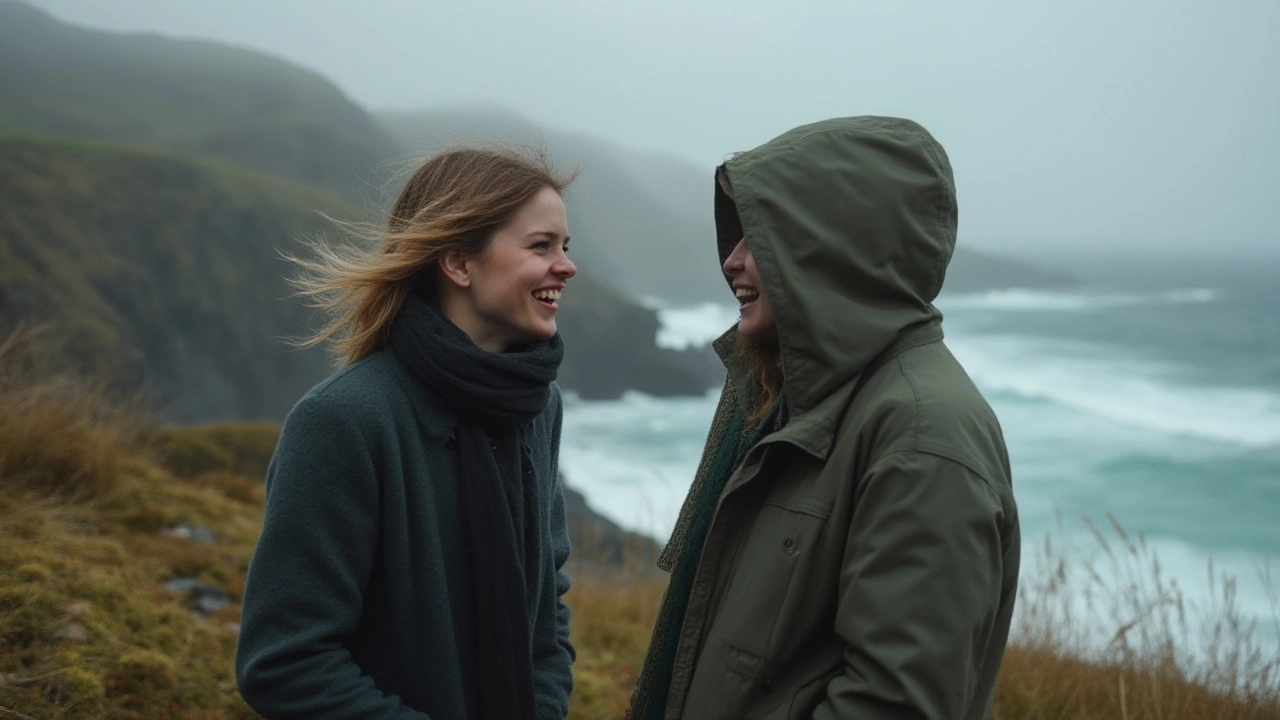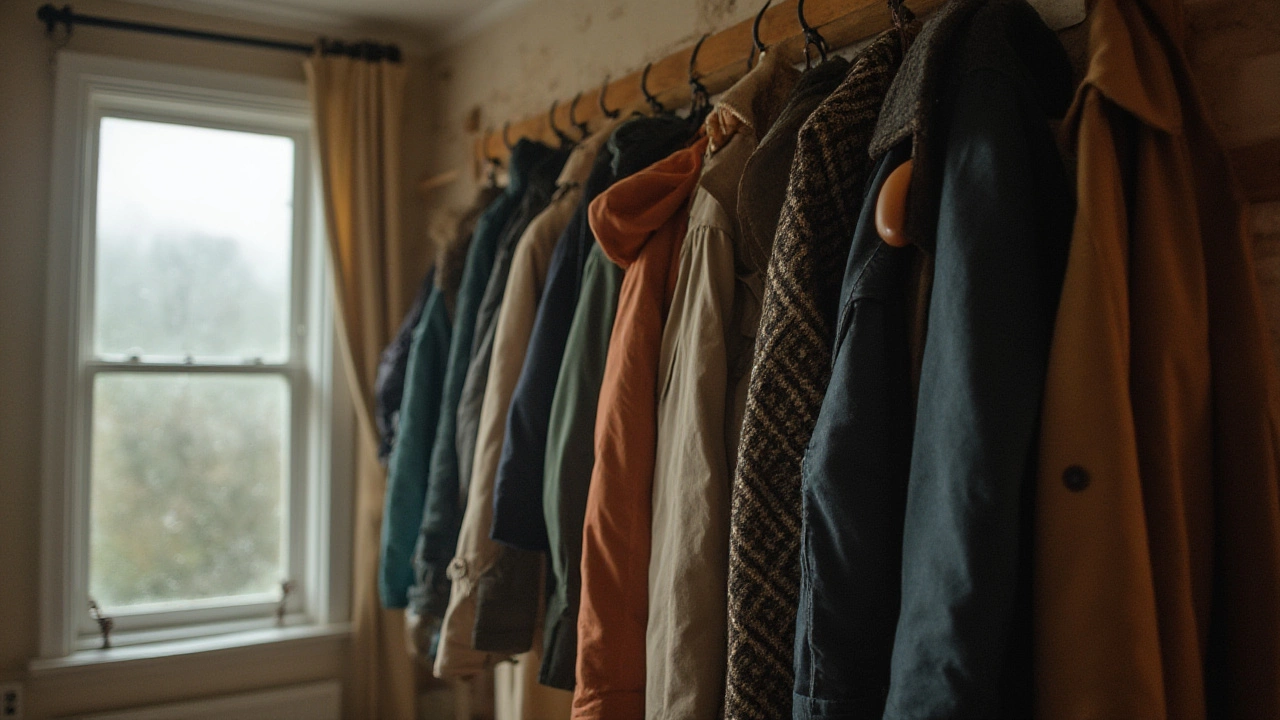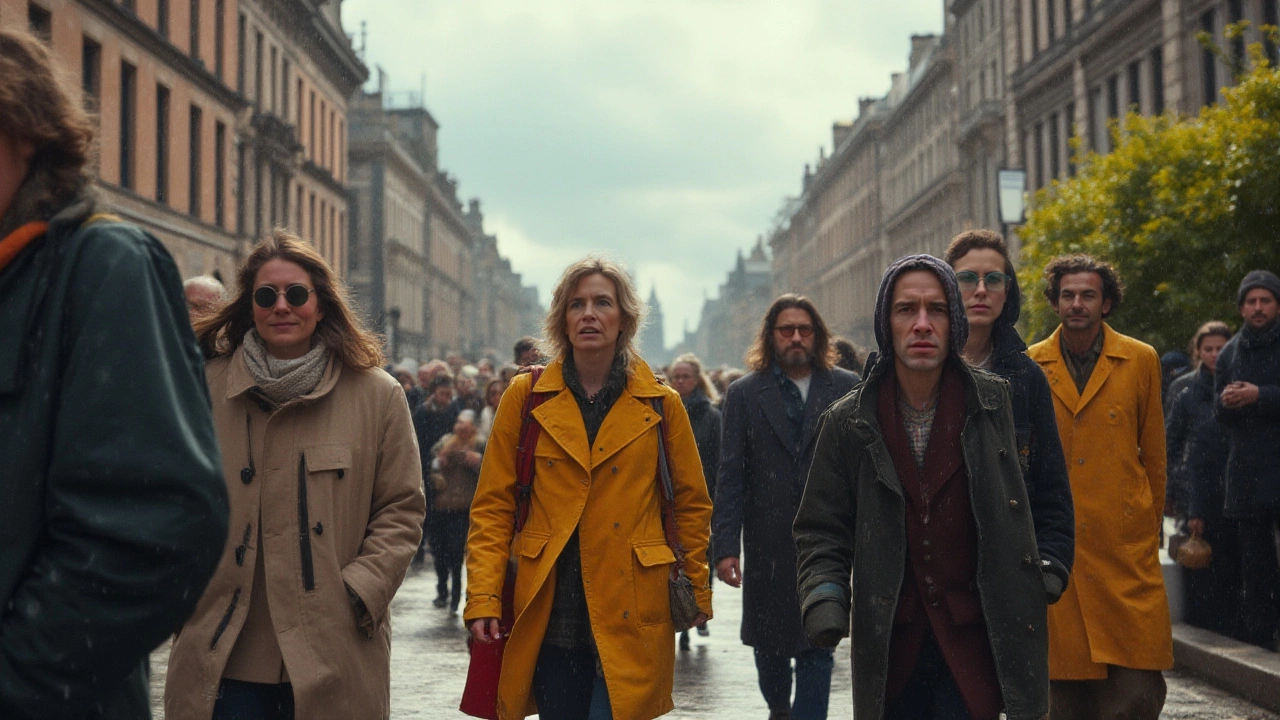Ever tried to pack for a trip across Ireland, or even just walked out your front door and second-guessed whether you needed your trusted jacket—or was it actually a coat kind of day? Ireland’s weather is famous for being full of surprises. It’s not just the Atlantic breezes or random bursts of mist—locals understand the importance of smart layers and never leaving home without a backup plan. But let’s clear up an age-old question that still pops up in shop changing rooms, Dublin streets, and rural bus stops from Donegal to Cork: just what’s the real difference between a jacket and a coat, especially in the ever-changeable Irish climate?
The Difference Is in the Details: Style, Length, and Local Needs
At first glance, jackets and coats can look pretty similar, especially at Penneys in Liffey Valley or when you’re eyeing a sale rack at Arnotts. The key distinction, though, actually starts with the length. Jackets are usually shorter, often ending at your waist or hips. Coats, meanwhile, typically push past the hips, sometimes grazing your knees or even ankles. That simple difference feels huge during a windswept walk along the Cliffs of Moher or waiting for the Luas when the rain is whipping sideways. Jackets are made for movement—they’re easier to manage on your bike through Phoenix Park or rushing for a coffee at Bewley’s. Coats, on the other hand, are designed for full-body defence, shielding more of you from cutting winds and the kind of slow, steady drizzle you get in Galway on a Tuesday.
The style tells a story, too. Jackets in Ireland range from unbeatable waterproof parkas, the kind you’ll find stacked at Trespass or Regatta, to sharp blazers perfect for Friday drinks in Temple Bar. You’ve also got your classic bomber or denim jackets—always cool, always practical for a quick jaunt to the Irish Film Institute or a GAA match where you’ll be standing, not sitting, for hours. Coats are often made of heavier fabrics like wool or down, with a more structured silhouette—think of the classic camel overcoat you might spot during winter at St. Stephen’s Green, or the big duffle with toggles your mam insists you need for the school run.
Material matters, and the Irish market knows this well. Jackets made from synthetic blends are great against those sudden showers, especially if they’re properly taped at the seams (a must if you’re braving winter on Inis Mór). But when bitter winds sweep in from the Atlantic, a long wool or cashmere coat starts to make sense. You can find the best of both locally—from Magee 1866’s heritage tweeds to modern waterproofs from The North Face, which seem to be everywhere on campus at Trinity.

When to Wear Which? Demystifying Irish Weather and Wardrobe Choices
Ireland tosses every season at you—sometimes in a single day. Your choice between jacket and coat is a dance with the elements, but also with your day’s demands. Heading to a formal event or wedding at Kilkenny Castle? Coats tend to win, especially those tailored beauties in navy or herringbone that lend a bit of class even over a regular work outfit. A jacket, on the other hand, is your buddy for everything easy-going: pub nights, errands, or even festival days like Electric Picnic, where mobility matters just as much as keeping dry.
If you ask Dublin commuters, they’ll swear by the versatility of the classic trench coat. Trenches split the difference between jacket and coat: long enough to keep your knees dry on a drizzly walk to Heuston Station, light enough to stash away if the sun dares to show itself. Cyclists in Galway and students trekking between UCC campuses have their own answer—the waterproof softshell or padded jacket with inner pockets for bus cards and sneaky snacks. Even folks heading out to a Blasket Islands hike pack smart: jackets for speedy movement, but an extra, longer coat tucked into the boot of the car in case the heavens open.
Length alone isn’t everything, so think about layering. Irish people have turned ‘layering’ into an art. A thick Aran sweater under a puffer jacket, or a shirt and fleece zipped beneath an oversize raincoat—every combo works depending on the month. The trick is knowing your plan: coats provide better coverage in biting cold (that January wind!), while jackets give you the flexibility you’ll want for those blink-and-you’ll-miss-them warm days of May or an autumn stroll beside the River Liffey.
| Feature | Jacket | Coat |
|---|---|---|
| Typical Length | Waist/hip | Below hips to knees/ankles |
| Main Use | Short trips, layering, sports, casual | Formal, business, warmth, rain/cold |
| Material | Synthetics, denim, lighter fabrics | Wool, down, heavy synthetics |
| Weight | Light/medium | Medium/heavy |
| Season | Spring, summer, autumn | Autumn, winter |
| Typical Irish Brands | Regatta, Trespass, Penneys | Magee, Arnotts, Dunnes Stores |

Buying Tips, Local Trends, and Smart Shopping in the Irish Market
Now for the juicy bits—how do you actually choose what’s right for you, especially with Irish brands and what’s hot on Grafton Street or in Cork city centre? Start with honesty: do you run hot or cold? If you’re like me, someone who always loses gloves by November but still feels the chill, a lined coat with deep pockets is a lifesaver in winter. Waterproofing can’t be just a buzzword—the real test is if it can handle sideways rain on O’Connell Bridge. Many Irish people swear by tested brands like Jack Murphy (especially for country living or equestrian events) or quality wellingtons paired with a waxed jacket from Dubarry, which you’ll spot all over Killarney when it’s lashing rain.
Trends change, but function never goes out of style. Right now, oversized puffers are everywhere, especially among students at Maynooth, while classic trench coats still sell out fast for spring. For business folks, a tailored wool coat is a staple for looking sharp from Monday meetings through Satanta Christmas parties. Locals know not to skimp on zips, buttons, or seams: if your coat can survive a night in a Salthill pub cloakroom, it can survive anything. Look out for smart details like storm flaps, inside phone pockets, and cuff adjusters to handle everything Irish skies throw at you.
Sizing can be a pain with layers. Always fit your coat or jacket while wearing your favourite thick jumper (or three) to make sure you’ll be comfortable. Remember, an ill-fitting coat is a misery on a windy Shannon bridge, so don’t rush the decision. For budgets, Irish high street bargains are legendary—keep an eye out for Arnotts’ mega winter sales and Oxfam finds for one-off vintage pieces that actually stand up to the rain.
Let’s wrap up with a quick-fire list of tips to help you cope with Ireland’s capricious climate:
- If it doesn’t cover your bum, it’s probably a jacket.
- When in doubt, check the fabric weight: heavier = coat, lighter = jacket.
- Waterproofing isn’t just for hiking—urban dwellers benefit too.
- Urban trendsetters love a tailored wool coat for winter, but don’t ignore a practical padded jacket for festivals (and pub gardens!).
- Keep a small foldaway rain jacket in your bag for those ‘here comes the sun—wait, never mind’ moments.
- Pockets, pockets, pockets. Bags are nice, but deep pockets make life easier in busy city streets.
- Don’t buy solely for looks: your favorite will always be the one that stands up to a November squall.
- Shop local when you can: Irish brands understand the elements better than any import.
Whether your heart lies with a sharp jacket at Croke Park or a classic coat for Sunday strolls in the Phoenix Park, picking the right outerwear changes everything. That’s the secret every Irish local, student, and tourist picks up quick: in a place where the only thing predictable is the unpredictability, there’s real value in choosing the outerwear that fits your day, your needs, and above all, your weather app. Trust me—my cat Luna may never go outside, but if she did, she’d want the cosiest, water-resistant coat in all of Dublin.
